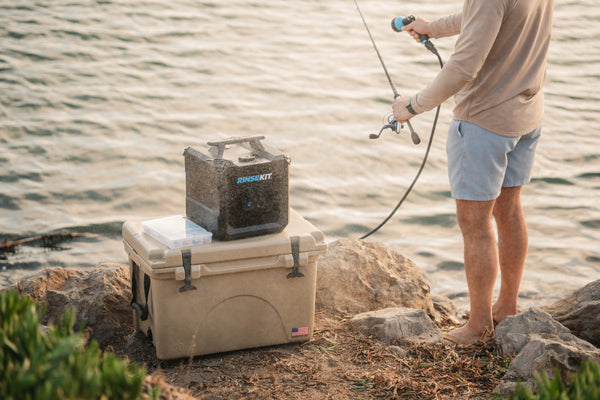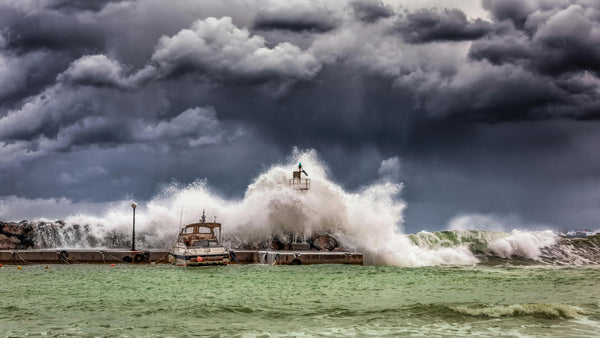
There’s nothing like a warm shower after a day of camping. You’ve been hiking dusty trails, cooking over a smoky campfire, maybe even wading through a river or two. By the time you make it back to camp, that little shower house feels like an oasis. And the best part? It’s right there, ready to use, often for free or for just a couple of bucks.
It seems like the perfect way to freshen up before crawling into your sleeping bag. But here’s the thing: campground showers, while convenient, have some hidden downsides that can affect your health, your wallet, and in some cases, even the environment.
Just like public facilities in other high-traffic places, campground showers can be hotspots for bacteria and fungi. Add in aging infrastructure, inconsistent cleaning schedules, and the simple fact that hundreds of people pass through them each week, and you have a recipe for more than just clean hair.
The Health Hazards Hiding in the Stall
While a steamy shower can feel like it is washing the day away, science says those campground shower stalls might be doing the opposite.
A 2011 study in Proceedings of the National Academy of Sciences found that communal showers, especially those with infrequent disinfection, often harbor Legionella bacteria. These bacteria can cause Legionnaires’ disease, a severe type of pneumonia. They thrive in warm, stagnant water inside pipes and showerheads, and can be inhaled through tiny droplets while showering.
And it is not just Legionella. Dermatologists have long warned about the prevalence of fungal infections like athlete’s foot (tinea pedis) and ringworm in public showers. The moist floors combined with constant foot traffic create ideal breeding grounds for these pathogens. Even if you wear flip-flops, which you absolutely should, spores and bacteria can still transfer to your skin, especially if you have cuts or abrasions from hiking.
Communal shower walls and curtains can also harbor Pseudomonas aeruginosa, a bacteria linked to skin rashes and outer ear infections. It thrives in wet, poorly sanitized environments. In high-use campgrounds where cleaning might only happen once a day, the risk is very real.
Quick Stats: Public and Campground Shower Risks
(Sources: PNAS 2011, AJPH 2013, USFS 2018, Environmental Science & Technology 2020)
-
Legionella bacteria found in 20–30% of tested communal showers in one multi-state study.
-
Athlete’s foot spores can survive in damp floors for up to 45 days without a host.
-
MRSA detected in 10% of high-traffic public restroom and shower surfaces tested.
-
Pseudomonas aeruginosa can live for more than 48 hours on wet surfaces like tiles and mats.
-
Average coin-operated campground shower: $1–$2 for 3–5 minutes. Multiple family members using them daily can cost $20+ per weekend.
-
Many older campground facilities drain greywater into septic systems or untreated leach fields that can leach nutrients into local waterways.

When Showers Hurt the Environment
Most people assume campground showers drain into municipal wastewater systems where the water is treated before being released. In more remote campgrounds, particularly those on public lands or in older facilities, wastewater often drains into septic tanks or untreated leach fields.
A 2018 U.S. Forest Service report noted that many aging campground facilities lack the infrastructure to fully treat greywater from showers, sinks, and laundry areas. This can lead to nutrient pollution, such as nitrogen and phosphorus, leaching into nearby streams and lakes. These nutrients fuel algal blooms that deplete oxygen and harm aquatic life.
There is also the product runoff problem. Every time a camper rinses off sunscreen, insect repellent, or antibacterial soap, those chemicals can flow directly into the soil or water table. Studies like Schenker et al. (2020, Environmental Science & Technology) show that compounds such as DEET and oxybenzone are persistent in the environment and can disrupt aquatic ecosystems, even in freshwater habitats far from the ocean.
Shared Spaces, Shared Germs
Even if environmental impact feels distant, the immediate public health risks are hard to ignore. The American Journal of Public Health has documented how MRSA (methicillin-resistant Staphylococcus aureus) can spread in communal facilities, especially where there is skin-to-skin contact with contaminated surfaces.
In a busy campground shower, dozens of strangers use the same handles, knobs, and changing benches every day. Cleaning staff cannot sanitize between each user. In damp environments, bacteria can linger for hours or even days.
This is especially concerning for families with young kids or people with compromised immune systems. What feels like a refreshing rinse could be a bacterial handshake you did not sign up for.
A Smarter Rinse: Why RinseKit Beats the Campground Shower

If you love camping but hate playing microbial roulette in a shared shower, there is a better way that gives you control over both cleanliness and cost.
What is RinseKit?
RinseKit is a line of high-capacity, battery-powered portable showers built for life outdoors. Each unit stores several gallons of water and delivers full spray pressure comparable to a home shower at the push of a button. You can fill a RinseKit from a hose, sink, or even a water bottle, which means you can take it anywhere without relying on campground plumbing.
For those who like a warm rinse after a long day on the trail, RinseKit pairs with the HyperHeater 2.0 accessory, which heats water to a comfortable temperature in minutes. That means you can enjoy a hot, high-pressure shower no matter how far you are from civilization.
Models range from the compact 3.5-gallon RinseKit PRO to the 5-gallon Rack Shower designed for extended trips or multiple users. Whether you are rinsing off dust after a hike, washing sandy gear, or cleaning up the dog, RinseKit gives you a private, hygienic, and environmentally friendly way to get clean on your own terms.
Clean Water, Clean Surfaces
With a RinseKit, the water you use is yours. It is not shared through old pipes or a decades-old showerhead. You handle the sprayer, you control the pressure, and no one else’s bacteria touches your rinse setup.
Because RinseKit models are battery-pressurized, they deliver consistent, high-pressure spray just like your shower at home. This is unlike gravity-fed camp showers that dribble after a few seconds. You can wash off dirt, sweat, and sunscreen efficiently without standing in a puddle where half the campground has already been.
Save Money, Save Time
Even with a modest 3.5 to 5 gallon capacity, a RinseKit can give multiple quick showers. This is enough for a small family to rinse off after a day on the trail. You are no longer feeding quarters into a slot or rushing through a timer.
When you factor in that many campgrounds charge $1 to $2 for just a few minutes of hot water, the cost adds up quickly. A family of four showering once a day could easily spend $20 or more per weekend. Over the course of a single camping season, that can add up to several hundred dollars in shower fees. Over a few years of regular camping, you could be looking at well over $1,000 in small but steady expenses — and that is without counting the time spent walking to and from the shower house or waiting in line.
A RinseKit is a one-time investment that pays for itself, often within the first season if you camp frequently. After that, every rinse is essentially free, and you are in control of both the quality and the convenience. Instead of trekking across camp with your towel and shower caddy, you can rinse right at your site, at the lake, or wherever it is most convenient. That means more time enjoying the fire and less time in line under flickering fluorescent lights.

Reduce Your Footprint
Using a portable shower also means you control where your rinse water goes. Instead of letting soapy runoff flow into fragile habitats, you can direct it onto gravel, vegetation, or a proper drainage area away from streams and lakes. This small step helps reduce nutrient and chemical loading in campground environments, making it a simple way to leave less trace while still staying clean.
Built for Camping, Built to Last
RinseKit units are rugged enough for the backcountry but compact enough to store in your RV or vehicle. You can fill them from a hose, sink, or even with a water bottle in a pinch. That versatility makes them a year-round tool for camping, road trips, or even rinsing gear at home.
References
-
American Journal of Public Health (2013). Environmental surfaces and the potential for transmission of hospital-acquired pathogens. AJPH, 103(9), 1580–1587. doi:10.2105/AJPH.2013.301414
-
Downs, C. A., et al. (2022). Environmental contamination from sunscreen ingredients in coastal ecosystems. Funded by NOAA.
-
Schenker, U., et al. (2020). Occurrence and fate of personal care products in the environment. Environmental Science & Technology, 54(2), 1017–1034.
-
U.S. Forest Service (2018). Campground and recreation site wastewater management on public lands. USDA Forest Service, Engineering Technical Report.
-
Whitman, R. L., et al. (2014). Relationship between pathogens and indicators in beach sand. Water Research, 67, 345–355. doi:10.1016/j.watres.2014.09.010
-
Proceedings of the National Academy of Sciences (2011). Legionella risk in communal shower facilities. PNAS, 108(31), 12313–12318. doi:10.1073/pnas.1104806108



